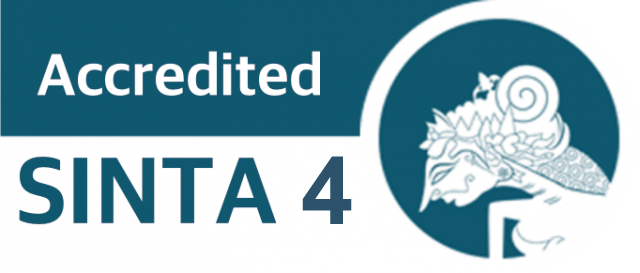Developing an Augmented Reality Chemistry Textbook on Acids and Bases with Ethnochemistry to Enhance Students Understanding of Chemical Representations
DOI:
10.29303/jpm.v20i6.10067Published:
2025-10-16Issue:
Vol. 20 No. 6 (2025)Keywords:
Acids and Bases; Augmented Reality; Chemical Representation; EthnochemistryArticles
Downloads
How to Cite
Downloads
Metrics
Abstract
This development research presents an Augmented Reality(AR)-based textbook that integrates chemical concepts with the SASAMBO culture, highlighting an innovative approach to ethnochemistry. The study aims to produce a practical, valid, and effective AR textbook to enhance students’ understanding of chemical representations. The research follows the 4D development model: Define, Design, Develop, and Disseminate. The textbook was validated by two experts and tested for effectiveness with a limited implementation involving 26 students. Data were collected using validation and practicality questionnaires, as well as pretest-posttest evaluations. Validation data were analyzed using Aiken’s V, while improvements in students’ understanding were assessed with a paired t-test via IBM SPSS Statistics 25. Results show high validity (Aiken’s V = 0.9), strong practicality (86% average score), and a significant increase in understanding (t = 16.871, p < 0.005). These findings suggest that the AR-based textbook is a valid, practical, and effective tool for enhancing students’ comprehension of chemical representation.
References
S. Ariani, E. Effendy, and S. Suharti, “Model Mental Mahasiswa Pada Fenomena Penghilangan Karat Melalui Elektrolisis,” Chemistry Education Practice,vol. 3, no. 2, p. em55-62, Nov. 2020, doi: 10.29303/cep.v3i2.2104.
D. F. Treagust, R. Duit, & M. Nieswandt. “Sources of students’ difficulties in learning Chemistry”. Educación Química, vol 11, No. 2. p. 228-235, Aug. 2018, doi: 10.22201/fq.18708404e.2000.2.66458
W. S. E. Sinaga,Y. Yusnaidar, W. Syahri, dan M. Muhaimin, “Pengembangan Multimedia Interaktif Berbentuk Aplikasi Android Berbasis Multipel Representasi pada Materi Kesetimbangan Kimia,” Jurnal Inovasi Pendidikan Kimia, vol. 17 no. 2, p. em81-91, Jul. 2023, doi: 10.15294/jipk.v17i2.37602.
L. Z. Jaber, & S. BouJaoude. “A macro–micro–symbolic teaching to promote relational understanding of chemical reactions”. International Journal of Science Education, vol. 34 no.7, p. 973-998, jun. 2012, doi: 10.1080/09500693.2011.569959
W. J. Musa, M. A. Mantuli, J. S. Tangio, H. Iyabu, J. La Kilo, and A. K. Kilo, “Identifikasi Pemahaman Konsep Tingkat Representasi Makroskopik, Mikroskopik, dan Simbolik pada Materi Ikatan Kimia,” vol 5, No. 1, p. 52–59, jun. 2023, doi: 10.34312/jjec.v5i1.15201.
G. Papageorgiou, V. Amariotakis, & V. Spiliotopoulou, “Developing a Taxonomy for Visual Representation Characteristics of Submicroscopic Particles in Chemistry Textbooks”. Science Education International, 30(3), 181-193, sep. 2019, doi: 10.33828/sei.v30.i3.4.
K. Broman, & I. Parchmann, “Students' application of chemical concepts when solving chemistry problems in different contexts”. Chemistry Education Research and Practice, vol. 15 no. 4, p.516-529, March 2014, doi: 10.1039/C4RP00051J.
S. Dargan, S. Bansal, M. Kumar, A. Mittal, & K. Kumar, “Augmented reality: A comprehensive review”. Archives of Computational Methods in Engineering, vol. 30, no. 2, p.1057-1080, mar. 2023, doi: 10.1007/s11831-022-09831-7.
Papanastasiou, G., Drigas, A., Skianis, C., Lytras, M., & Papanastasiou, E. (2019). Virtual and augmented reality effects on K-12, higher and tertiary education students’ twenty-first century skills. Virtual Reality, vol. 23 no. 4, p. 425-436, Dec. 2019, doi: 10.1007/s10055-018-0363-2.
O.O. Rita, and G. Guspatni, “Augmented Reality (AR) Technology in Chemistry Learning, Literature Review: Forms, Barriers and Utilization of Augmented Reality (AR) in Chemistry Learning”. Jurnal Pendidikan Tambusai, 2024. vol. 8, p.18552–18562.
M. Ovens, M. Ellyard, J. Hawkins, & D. Spagnoli, “Developing an augmented reality application in an undergraduate DNA precipitation experiment to link macroscopic and submicroscopic levels of chemistry”, J. Chem. Educ. vol 97, p. 3882-3886, Sep. 2020, doi: 10.1021/acs.jchemed.0c00481.
H. Roshandel, M. Shammami, S. Lin, Y.P. Wong, and P.L. Diaconescu, “App-Free Method for Visualization of Polymers in 3D and Augmented Reality”, Journal of Chemical Education, vol. 100 no. 5, p. 2039–2044, Apr. 2023, doi: 10.1021/acs.jchemed.2c01131.
D. F. Treagust, & G. Chittleborough, “Chemistry: A matter of understanding representations. In Subject-specific instructional methods and activities”, vol 8, p. 239-267, 2021. Emerald Group Publishing Limited.
M. Abdinejad, B. Talaie, H. S. Qorbani, & S. Dalili, “Student perceptions using augmented reality and 3d visualization technologies in chemistry education”, Journal of Science Education and Technology, vol. 30 no. 1, p. 87-96. Feb. 2021, doi: 10.1007/s10956-020-09880-2.
A. Adinda, S. Mulia, I. Irfan, dan Gusmaneli, “Penerapan Strategi Pembelajaran Scaffolding Dalam Membentuk Kemandirian Peserta Didik”. Jurnal Bima: Pusat Publikasi Ilmu Pendidikan bahasa dan Sastra, vol. 2 no. 2, p. 34–41, 2024, doi: 10.61132/bima.v2i2.763.
A. Indriyani, Yuniar dan R. Pratiwi, “Pengembangan Lembar Kerja Peserta Didik (LKPD) Berbasis Multipel Representasi pada Materi Larutan Elektrolit dan Non Elektrolit”. Orbital: Jurnal Pendidikan Kimia, vol. 7 no. 2, p. 153–170, Dec. 2023. doi: 10.19109/ojpk.v7i2.20185.
D. Wahyudiati, dan F. Fitriani, “Etnokimia: Eksplorasi Potensi Kearifan Lokal Sasak Sebagai Sumber Belajar Kimia”, Jurnal Pendidikan Kimia Indonesia, vol. 5 no. 2, p. 102, 2021, doi: 10.23887/jpk.v5i2.38537.
N. Azizah, dan S. Premono, “ Identifikasi Potensi Budaya Lokal Berbasis Etnokimia Di kabupaten Bantul”. Journal of Tropical Chemistry Research and Education, vol. 3 no. 1, p. 53–60, 2021, doi: 10.14421/jtcre.2021.31-06.
A.C. Lalang, H. Christianto, D. Lestarani, L.A.M. Parera, dan M.M. Murni, “Etnokimia Pada Kain Tenun Songke Asal Desa Kakor Kecamatan Lembor Selatan Kabupaten Manggarai Barat, Nusa Tenggara Timur”, Jurnal Beta Kimia, vol. 3 no. 2, p. 15–28, 2023. doi: 10.35508/jbk.v3i2.13602.
Y. Andayani, A. A. Purwoko, M. Haris, B. P. Adiguna, E. N. Lestari, B. E. Hurairah, “Peningkatan Kemampuan Guru Kimia Dalam Mengidentifikasi Sain Ilmiah dari Budaya Masyarakat Sasak, Samawa dan Mbojo (Etnosasambo)”. Jurnal Pengabdian Magister Pendidikan IPA, vol. 6 no. 4, p.1–5, 2023, doi: 10.29303/jpmpi.v6i4.5949.
A. Aldiansyah, J.I. Pasa, M.R. Muttaqin, N. N. Awaliyah, dan F. Erika, “Literatur Review : Keterkaitan Pembelajaran Kimia Terhadap Pendekatan Etnokimia Di Indonesia”. CHEDS: Journal of Chemistry, Education, and Science, vol. 7 no. 2, 238–246, 2023, doi: 10.30743/cheds.v7i2.8416.
Supriadi, W. Wildan, J. Siahaan, Muntari, dan M. Haris, “Pengembangan Media Pembelajaran Kimia Berbasis Teknologi Augmented Reality (AR) untuk Melatih Model Mental Siswa SMA di Daerah Geopark Rinjani”, Chemistry Education Practice, vol. 6 no. 1, p. 8–14, Mei, 2024, doi: 10.29303/cep.v6i1.4206.
Borg, W. R., & Gall, M. D. (1983). Educational research: An introduction (4th ed.). New York: Longman.
Sugiyono. (2017). Metode penelitian dan pengembangan (Research and Development/R&D). Bandung: Alfabeta.
N.R. An Nabil, I. Wulandari, S. Yamtinah, S.R.D. Ariani, dan M. Ulfa, “Analisis Indeks Aiken untuk Mengetahui Validitas Isi Instrumen Asesmen Kompetensi Minimum Berbasis Konteks Sains Kimia”. Paedagogia Jurnal Penelitian Pendidikan, vol. 25 no. 2, p. 184-191, Aug. 2022, doi: 10.20961/paedagogia.v25i2.64566
S. Hamid, H. A. Musril, L. Efriyanti, dan R. Okra, “Perancangan Media Pembelajaran Informatika Menggunakan Powtoon di MTSn 6 Agam”, Jurnal Edik Informatika, vol. 9 no. 1, p. 21–32, Oct. 2022, doi: 10.22202/ei.2022.v9i1.6271.
A. Jaenudin, & I. S. Melati, “Case-based interactive e-module: an alternative supplement to increase student learning motivation”, Journal of Education Technology, vol. 6 no. 4, p. 674-684, Nov. 2022, doi:10.23887/jet.v6i4.47254.
S. Thiagarajan. 1974. Instructional development for training teachers of exceptional children: A sourcebook.
A. Cetin-Dindar & O. Geban, “Conceptual understanding of acids and bases concepts and motivation to learn chemistry”. The Journal of Educational Research, vol. 110 no. 1, p. 85-97, 2017,doi: 10.1080/00220671.2015.1039422.
R. Hasibuan, R. Fitri, & U. Dewi, “STEAM-Based Learning Media: Assisting in Developing Children’s Skills”. Jurnal Obsesi: Jurnal Pendidikan Anak Usia Dini, vol. 6 no. 6, p. 6863-6876, Nov. 2022, doi: 10.31004/obsesi.v6i6.3560.
B. Muqdamien, U. Umayah, J. Juhri, dan D.P. Raraswaty, “Tahap Definisi Dalam Four-D Model Pada Penelitian Research & Development (R&D) Alat Peraga Edukasi Ular Tangga Untuk Meningkatkan Pengetahuan Sains Dan Matematika Anak Usia 5-6 Tahun”, Intersections, vol. 6 no. 1, p.23–33, 2021, doi: 10.47200/intersections.v6i1.589.
J. Levy, I. C. Chagunda, V. Iosb, D. C. Leitch, & J. S. McIndoe, “MoleculAR: An Augmented Reality Application for Understanding 3D Geometry”, Journal of Chemical Education, vol. 101, p. 2533-2539, Mar. 2024, doi: 10.1021/acs.jchemed.3c01045.
K. S. Kartini, & N. H. Lukman, “Implementasi Media Pembelajaran Berbasis Augmented Reality Mata Pelajaran Molekul Kimia Tingkat SMA”. Jurnal Widya Laksmi: Jurnal Pengabdian Masyarakat, vol. 4 no. 1, p. 33-37, Jan. 2024, doi: 10.59458/jwl.v4i1.70.
Author Biographies
Sunniarti Ariani, Chemistry Education Study Program, University of Mataram
Supriadi Supriadi, Chemistry Education Study Program, University of Mataram
Yunita Ardiyanti, Chemistry Education Study Program, University of Mataram
Weny Amanatul Hidayah, Chemistry Education Study Program, University of Mataram
Adina Ayu Daraswita, Informatics Engineering Study Program, University of Mataram
License
Copyright (c) 2025 Sunniarti Ariani, Supriadi Supriadi, Yunita Ardiyanti, Weny Amanatul Hidayah, Adina Ayu Daraswita

This work is licensed under a Creative Commons Attribution 4.0 International License.
The following terms apply to authors who publish in this journal:
1. Authors retain copyright and grant the journal first publication rights, with the work simultaneously licensed under a Creative Commons Attribution License 4.0 International License (CC-BY License) that allows others to share the work with an acknowledgment of the work's authorship and first publication in this journal.
2. Authors may enter into separate, additional contractual arrangements for the non-exclusive distribution of the journal's published version of the work (e.g., posting it to an institutional repository or publishing it in a book), acknowledging its initial publication in this journal.
3. Before and during the submission process, authors are permitted and encouraged to post their work online (e.g., in institutional repositories or on their website), as this can lead to productive exchanges as well as earlier and greater citation of published work (See The Effect of Open Access).











